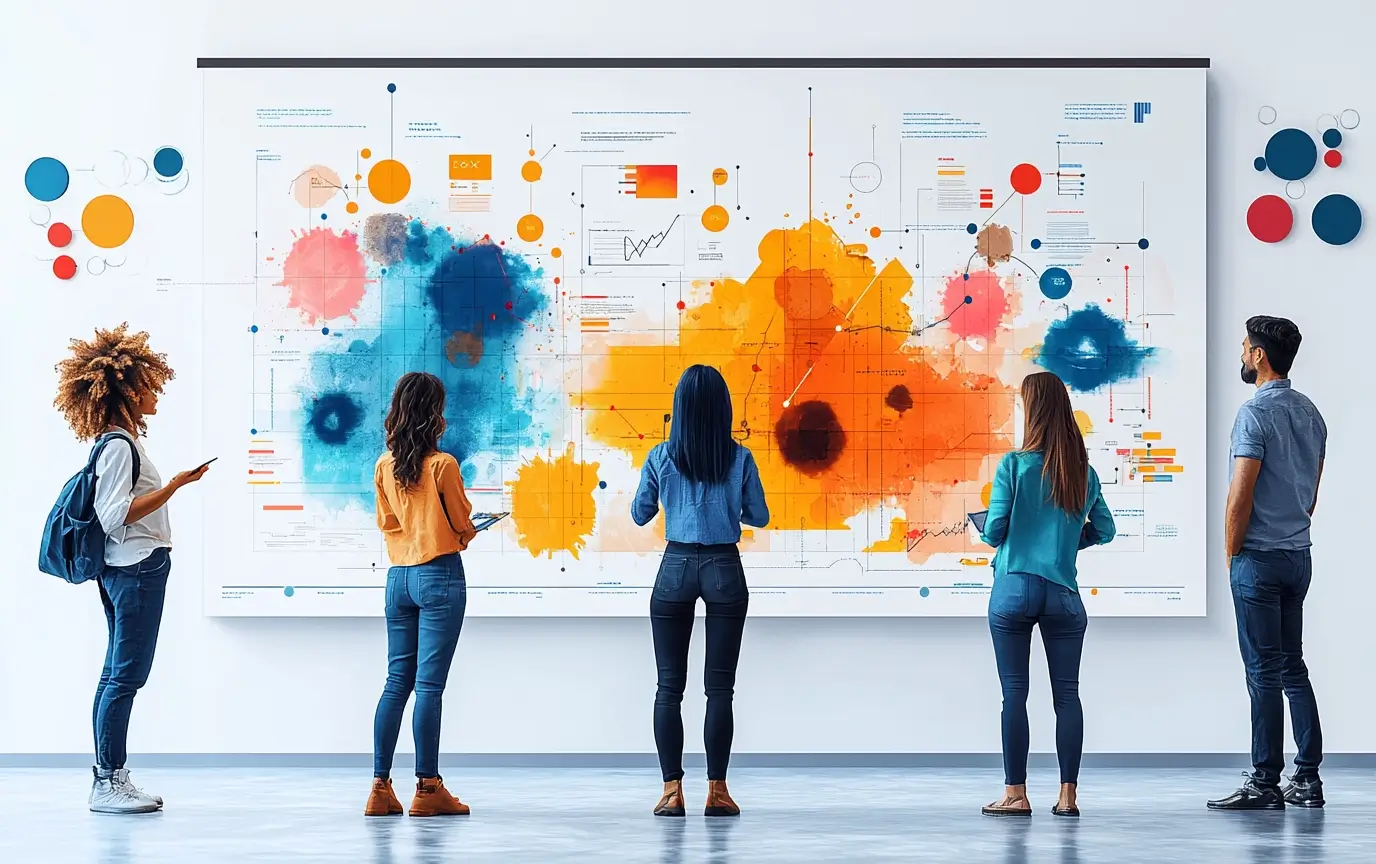Customer Experience (CX) and AI: Opportunities and Challenges
%20and%20AI.%20Opportunities%20and%20Challenges.webp)
1. Introduction
Artificial Intelligence (AI) is revolutionizing how businesses approach Customer Experience (CX). By harnessing the power of AI, companies can deliver more personalized, efficient, and scalable customer interactions. However, along with the opportunities AI presents, there are also challenges that businesses must navigate to ensure they enhance, rather than hinder, the customer experience. This article explores the key opportunities and challenges of integrating AI into CX strategies, providing insights into how businesses can maximize the benefits while mitigating potential risks.
2. Opportunities in AI-Driven CX
1. Personalization at Scale:
- AI enables businesses to deliver highly personalized experiences at scale. Through data analysis and machine learning, AI can identify individual customer preferences and behaviors, allowing for tailored recommendations, offers, and communications.
- Example: Netflix uses AI to analyze viewing habits and recommend personalized content, enhancing user engagement and satisfaction.
2. Enhanced Customer Support with AI-Powered Chatbots:
- AI-powered chatbots can provide 24/7 customer support, handling routine inquiries and freeing up human agents for more complex issues. These chatbots can resolve issues quickly, improving response times and customer satisfaction.
- Example: H&M utilizes AI chatbots on their website and app to assist customers with product inquiries, order tracking, and returns, providing immediate assistance.
3. Predictive Analytics for Proactive Service:
- AI can predict customer needs and behaviors by analyzing past interactions and external data. This allows businesses to anticipate customer issues and address them proactively, preventing dissatisfaction before it arises.
- Example: American Express uses predictive analytics to identify potential cardholder issues and proactively reach out to resolve them before the customer even realizes there's a problem.
4. Automating Routine Tasks for Efficiency:
- AI can automate repetitive tasks, such as data entry or processing transactions, which streamlines operations and allows employees to focus on more strategic, customer-facing activities.
- Example: Bank of America’s AI assistant, Erica, automates routine banking tasks like bill payments and transaction searches, providing customers with faster service and reducing operational costs.
5. Improved Customer Insights:
- AI can analyze large datasets to uncover deep insights into customer behavior, preferences, and trends. These insights can inform more effective marketing strategies and product development.
- Example: Coca-Cola uses AI to analyze social media data, gaining insights into consumer sentiment and preferences, which informs product innovation and marketing campaigns.
3. Challenges in AI-Driven CX
1. Data Privacy and Security:
- The use of AI in CX relies heavily on customer data, raising significant privacy and security concerns. Businesses must ensure they are compliant with data protection regulations and that they handle customer data responsibly.
- Challenge: Companies like Facebook have faced scrutiny over data privacy practices, highlighting the importance of maintaining trust while leveraging AI.
2. Maintaining Human Touch:
- While AI can automate many aspects of CX, it lacks the empathy and emotional intelligence of human interactions. Businesses must strike a balance between automation and the human touch to ensure customers feel valued and understood.
- Challenge: Zappos, known for its exceptional customer service, emphasizes the importance of human interaction in customer support, something that AI alone cannot replicate.
3. Managing AI Bias:
- AI systems can inadvertently perpetuate biases present in the data they are trained on, leading to unfair treatment of certain customer groups. Businesses must actively work to identify and mitigate these biases.
- Challenge: Amazon had to discontinue an AI recruitment tool after it was found to be biased against female candidates, demonstrating the importance of monitoring AI systems for bias.
4. Integration with Existing Systems:
- Integrating AI into existing CX systems can be complex and resource-intensive. Businesses need to ensure that AI tools work seamlessly with their current infrastructure to avoid disruptions in service.
- Challenge: Legacy banks often struggle with integrating AI into their outdated systems, which can slow down the implementation of AI-driven CX initiatives.
5. Cost of Implementation:
- Implementing AI solutions can be costly, particularly for small and medium-sized businesses. The initial investment in AI technology, along with ongoing maintenance and updates, can be a significant financial burden.
- Challenge: Smaller retailers may find it challenging to compete with large e-commerce platforms that have the resources to implement advanced AI solutions.
4. Case Studies: Brands Leading in AI-Driven CX
1. Sephora:
- Sephora uses AI to enhance the in-store and online shopping experience. Their AI-powered virtual artist tool allows customers to try on makeup virtually before purchasing, providing a personalized and engaging experience.
2. Starbucks:
- Starbucks leverages AI for personalized marketing through its app, sending tailored offers based on individual purchasing habits and preferences. This approach has significantly increased customer engagement and loyalty.
3. Tesla:
- Tesla uses AI to provide a seamless and proactive customer experience. From predicting maintenance needs to providing over-the-air software updates, Tesla ensures that customers receive timely service without the need for dealership visits.
4. Alibaba:
- Alibaba employs AI in its customer service operations, using chatbots to handle millions of queries during peak shopping periods, such as Singles' Day, ensuring that customer inquiries are addressed promptly.
5. Spotify:
- Spotify’s AI-driven recommendation engine personalizes music playlists for users based on their listening history and preferences, creating a highly engaging and tailored user experience.
5. Ethical Considerations in AI-Driven CX
As AI becomes more integrated into CX, ethical considerations become increasingly important. Businesses must ensure that their use of AI aligns with ethical standards, including fairness, transparency, and accountability.
Ethical Issues to Consider:
- Transparency: Clearly communicate to customers when and how AI is being used in their interactions.
- Fairness: Ensure that AI systems are free from bias and that they provide equitable service to all customer segments.
- Accountability: Establish clear accountability for decisions made by AI systems, particularly in customer-facing roles.
6. Future Trends in AI-Driven CX
As AI technology continues to evolve, new trends are emerging that will shape the future of Customer Experience (CX):
1. Emotionally Intelligent AI:
- Future AI systems will be capable of detecting and responding to customer emotions, enabling more empathetic and human-like interactions.
2. Hyper-Personalization:
- AI will enable even more granular levels of personalization, delivering experiences tailored not just to individuals, but to specific contexts and moments.
3. AI-Powered Voice Assistants:
- The use of AI-driven voice assistants will expand beyond simple tasks, offering more complex, conversational interactions that enhance the CX.
4. AI in Augmented Reality (AR):
- Combining AI with AR will allow customers to interact with products in new ways, such as virtually trying on clothes or visualizing how furniture will look in their homes.
5. AI-Driven Self-Service:
- AI will enhance self-service options, enabling customers to resolve issues and complete transactions without the need for human assistance.
7. Conclusion
The integration of Artificial Intelligence (AI) into Customer Experience (CX) presents both significant opportunities and challenges. By leveraging AI’s capabilities, businesses can deliver more personalized, efficient, and engaging experiences. However, it’s crucial to address the challenges—such as data privacy, maintaining human touch, and managing AI bias—to ensure that AI enhances rather than detracts from the customer experience. As AI technology continues to evolve, staying ahead of trends and maintaining a focus on ethical considerations will be key to unlocking the full potential of AI in CX.
Check Renascence's Signature Services

Behavioral Economics
Discover the power of Behavioral Economics in driving customer behavior.

Mystery Shopping
Uncover hidden insights with our mystery shopping & touchpoint audit services.

Experience Design
Crafting seamless journeys, blending creativity & practicality for exceptional experiences.
Experience Loom
Discover the latest insights from industry leaders in our management consulting and customer experience podcasts.
The Naked Customer. Episode 3. Customer Loyalty, Brand Loyalty & CX
In this episode of The Naked Customer Podcast, host Aslan Patov is joined by JD Ackley, CEO of RAIZOR AI, to explore the evolving role of AI in customer experience (CX) and its impact on automation, job security, and creativity.
In this episode of The Naked Customer Podcast, host Aslan Patov is joined by Mark Hamill, CEO & Co-founder of ARCET Global, to explore the evolution of Customer Experience (CX) and its growing role in business transformation.
In this episode of The Naked Customer Podcast, host Aslan Patov is joined by Mark Hamill, CEO & Co-founder of ARCET Global, to explore the evolution of Customer Experience (CX) and its growing role in business transformation.
In this episode of The Naked Customer Podcast, host Aslan Patov is joined by JD Ackley, CEO of RAIZOR AI, to explore the evolving role of AI in customer experience (CX) and its impact on automation, job security, and creativity.
Experience Journal's Latest
Stay up to date with our informative blog posts.
%20in%20Healthcare.%20A%20Cure%20for%20Patient%20Pain%20Points.webp)
Customer Experience (CX) in Healthcare: A Cure for Patient Pain Points
%20Trends%20in%202026.%20What%20to%20Expect.webp)
Digital Transformation (DT) Trends in 2026: What to Expect

Behavioral Economics for Business: How Companies Use It Every Day
%20How-To.%20Practical%20Tips%20That%20Work.webp)
Employee Experience (EX) How-To: Practical Tips That Work
.webp)
The Critical Factors Influencing Employee Experience (EX)
%20Jobs.%20How%20To%20Succeed%20in%202025.webp)
Remote Employee Experience (EX) Jobs: How To Succeed in 2025
%20for%20SMEs%20in%20the%20Middle%20East.%20What%20Works%20and%20What%20Fails.webp)
Customer Experience (CX) for SMEs in the Middle East: What Works and What Fails

Why CX Starts With EX in 2026: Culture, Connection, Performance
%20Wheel.%20Mapping%20Outcomes.webp)
The Employee Experience (EX) Wheel: Mapping Outcomes

Behavioral Economics Can Best Be Described As "Psychology Meets Economics"

Behavioral Economics Is More Than Just Numbers

Behavioral Economics Explains Why People Are Irrational: And What to Do About It

Is Behavioral Economics Micro or Macro? Understanding Its Scope
%3F%20Strategies%20for%20Modern%20Organizations.webp)
How McKinsey Approaches Employee Experience (EX)? Strategies for Modern Organizations

Behavioral Economics Is Dead: Debates on Its Future
%20Leader%20Do%3F.webp)
What Does an Employee Experience (EX) Leader Do?
%20Leader%20Do%3F.webp)
What Does an Employee Experience (EX) Leader Do?
%20Is%20Important%20in%202026.webp)




